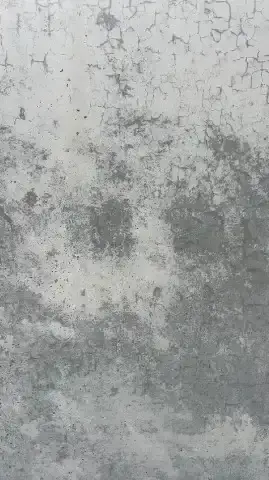Understanding Efflorescence in Toronto Basements
Efflorescence is one of the most common issues Toronto homeowners encounter in their basements. This white, chalky residue appears on concrete and masonry surfaces when water evaporates, leaving behind mineral deposits. While efflorescence itself isn't dangerous, it's a clear indicator of moisture problems that need attention to prevent more serious issues like structural damage or mold growth.
Toronto-Specific Factors
Toronto's clay soil and limestone bedrock create ideal conditions for efflorescence. Our groundwater contains high levels of minerals that, when they pass through concrete foundations, leave behind the characteristic white deposits. Seasonal freeze-thaw cycles worsen the problem by creating micro-cracks that allow more water penetration.
What Causes Efflorescence?

The Three-Step Efflorescence Process
1. Water Penetration
Water containing dissolved minerals enters concrete through pores, cracks, or capillary action
2. Migration
The mineral-rich water travels through the concrete toward the surface
3. Crystallization
Water evaporates at the surface, leaving behind white crystalline mineral deposits
Primary Water Sources
- Groundwater pressure: Hydrostatic pressure forces water through foundation
- Poor exterior drainage: Water pooling around foundation
- Capillary action: Concrete naturally draws moisture upward
- Foundation cracks: Direct water pathways through walls
Mineral Sources
- Concrete calcium hydroxide: Natural byproduct of cement curing
- Groundwater minerals: Dissolved limestone, calcium, magnesium
- Salt contamination: De-icing salts from adjacent surfaces
- Mortar joint minerals: From deteriorating mortar between blocks
The Dangerous Side: White Mold
While efflorescence is a cosmetic and moisture issue, white mold is a serious health hazard. Many homeowners mistake white mold for efflorescence, delaying crucial remediation. White mold thrives in Toronto's humid basements and can cause significant health problems, especially for children, elderly people, and those with compromised immune systems.
Health Impacts of White Mold
Immediate Symptoms
- • Respiratory irritation and coughing
- • Allergic reactions (sneezing, runny nose)
- • Skin and eye irritation
- • Headaches and fatigue
- • Worsening of existing asthma
Long-term Risks
- • Chronic respiratory problems
- • Immune system suppression
- • Severe allergic sensitization
- • Potential toxic reactions (rare)
- • Compromised air quality throughout home
High-Risk Groups: Infants, elderly individuals, pregnant women, and people with respiratory conditions, autoimmune disorders, or allergies are at higher risk for severe reactions.
Common White Mold Species in Toronto Basements
Penicillium
Blue-green mold that appears white in early stages. Common on water-damaged materials.
Risk: Moderate to high allergenic potential
Aspergillus
White, fuzzy growth on organic materials. Can become other colors as it matures.
Risk: High allergenic and toxic potential
Fusarium
Thrives in water-damaged areas, appears cotton-like and white initially.
Risk: Moderate allergenic, potential for toxic reactions
Professional Testing vs DIY Identification
DIY Identification Methods
Visual Inspection
- • Pattern and texture analysis
- • Location assessment
- • Growth pattern observation
- • Color and consistency check
Simple Tests
- • Water spray test (dissolves efflorescence)
- • Smell test (mold has musty odor)
- • Touch test (texture differences)
- • Bleach test (mold lightens temporarily)
Best for: Initial identification and preliminary assessment
Professional Testing
Laboratory Analysis
- • Species identification
- • Concentration levels
- • Toxicity assessment
- • Air quality testing
Professional Benefits
- • Accurate species identification
- • Health risk assessment
- • Remediation guidance
- • Insurance documentation
Best for: Health concerns, extensive growth, or insurance claims
Treatment Solutions
Efflorescence Removal & Prevention
While efflorescence removal is straightforward, preventing recurrence requires addressing underlying moisture issues.
Immediate Removal Steps
- 1 Brush off loose deposits with stiff brush
- 2 Rinse with clean water to dissolve remaining minerals
- 3 For stubborn deposits, use mild acid solution (vinegar)
- 4 Neutralize acid with baking soda solution
- 5 Rinse thoroughly and allow to dry completely
Long-term Prevention
- Improve exterior drainage systems
- Seal foundation cracks and joints
- Install proper basement waterproofing
- Apply crystalline waterproofing treatments
- Control basement humidity levels
Important: Simply removing efflorescence without addressing moisture sources will result in recurring problems. Focus on the underlying water intrusion causes.
White Mold Remediation
Mold remediation requires proper safety precautions and often professional intervention. DIY removal is only appropriate for small areas (less than 10 square feet).
Essential Safety Precautions
- Wear N95 or P100 respirator mask
- Use protective eyewear and gloves
- Seal off work area with plastic sheeting
- Use negative air pressure (exhaust fan)
- Wear disposable coveralls
- Avoid disturbing mold unnecessarily
When DIY May Be Appropriate
- • Area smaller than 10 square feet
- • Surface mold on non-porous materials
- • No underlying moisture issues
- • No one in household has health issues
- • Recent, limited growth
Use proper safety equipment and follow EPA guidelines
When Professional Help Required
- • Area larger than 10 square feet
- • Mold on porous materials (wood, drywall)
- • HVAC system contamination
- • Health concerns or compromised individuals
- • Extensive structural damage
Professional remediation ensures safe, complete removal
Prevention Strategies for Toronto Homes
Moisture Control
- Basement dehumidification: Maintain humidity below 50%
- Proper ventilation: Exhaust fans in high-moisture areas
- Fix leaks promptly: Address plumbing issues immediately
- Improve air circulation: Use fans to prevent stagnant air
Foundation Protection
- Exterior waterproofing: Professional membrane installation
- Proper drainage: French drains and weeping tile systems
- Crack sealing: Professional injection and sealing
- Sump pump systems: Backup power and regular maintenance


